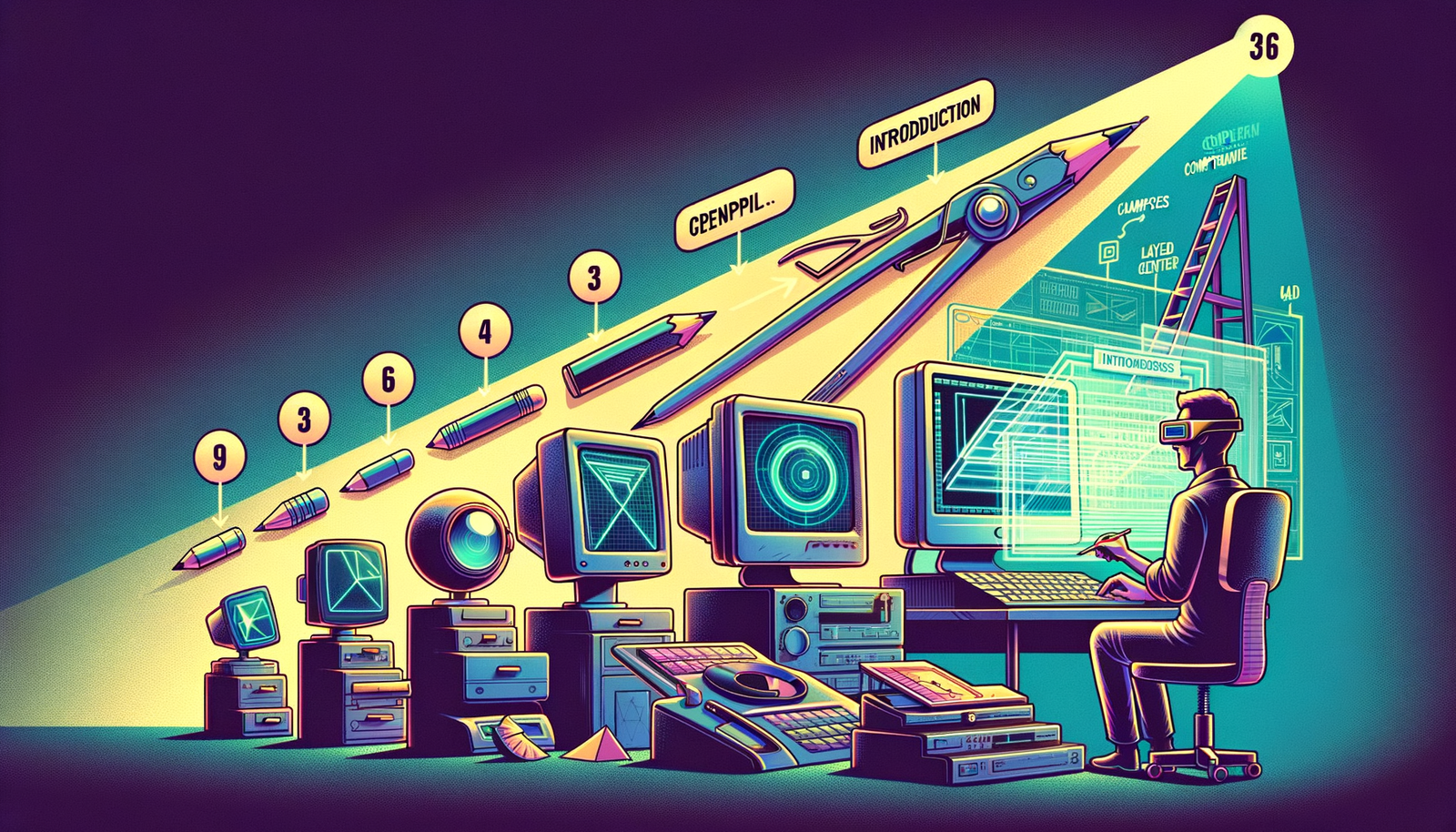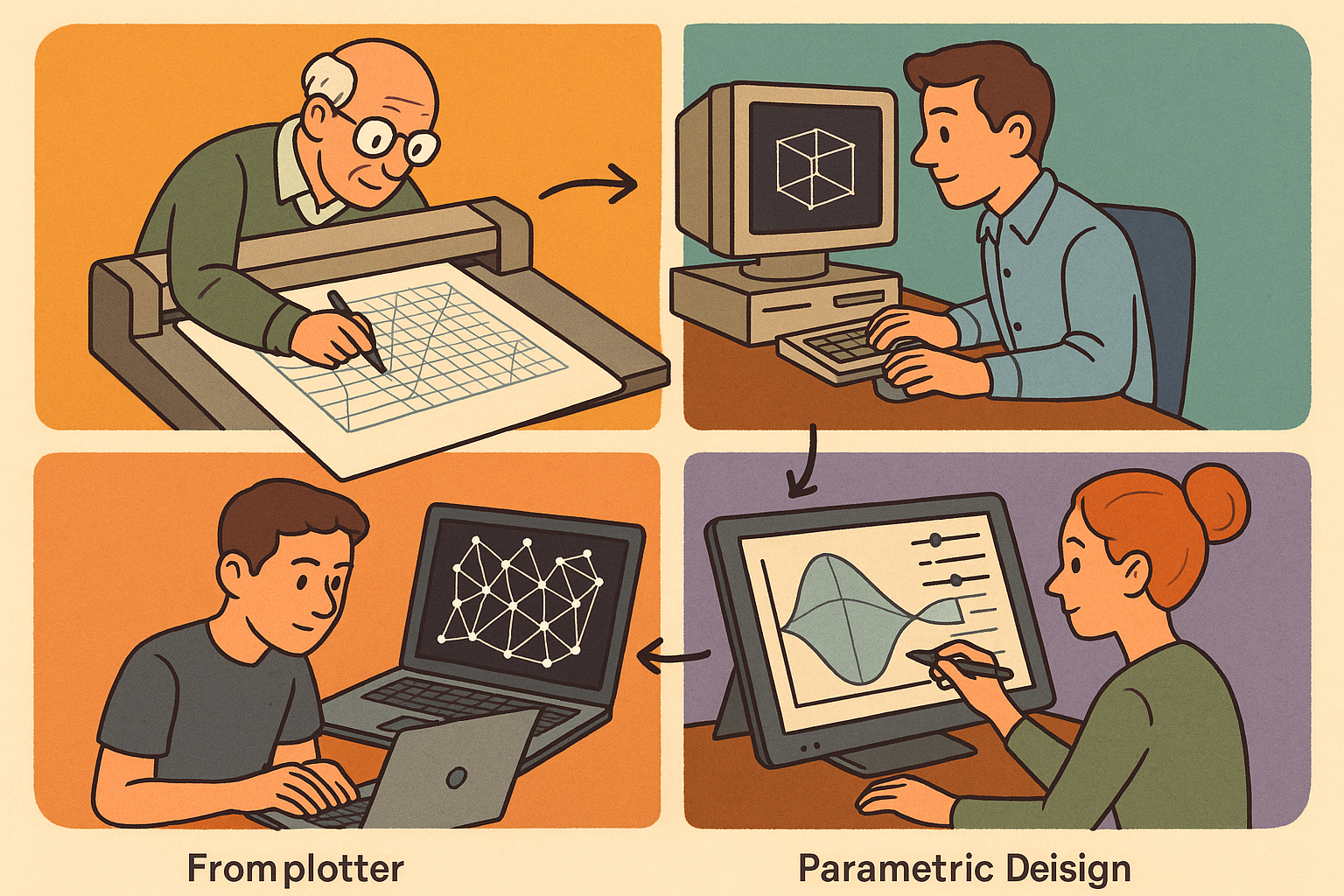Your Cart is Empty
Customer Testimonials
-
"Great customer service. The folks at Novedge were super helpful in navigating a somewhat complicated order including software upgrades and serial numbers in various stages of inactivity. They were friendly and helpful throughout the process.."
Ruben Ruckmark
"Quick & very helpful. We have been using Novedge for years and are very happy with their quick service when we need to make a purchase and excellent support resolving any issues."
Will Woodson
"Scott is the best. He reminds me about subscriptions dates, guides me in the correct direction for updates. He always responds promptly to me. He is literally the reason I continue to work with Novedge and will do so in the future."
Edward Mchugh
"Calvin Lok is “the man”. After my purchase of Sketchup 2021, he called me and provided step-by-step instructions to ease me through difficulties I was having with the setup of my new software."
Mike Borzage
Design Software History: From Sketchpad to AI: The Evolution and Future of Design Software
July 07, 2024 3 min read


I. Introduction to Design Software History
The significance of design software in modern industries cannot be overstated. From engineering and architecture to animation and manufacturing, design software has revolutionized the way professionals create, visualize, and bring ideas to life. This article aims to take you on a journey through the key milestones and innovations that have shaped the history of design software.
II. Early Beginnings and Pioneers
Sketchpad: The Genesis of CAD
The history of Computer-Aided Design (CAD) begins with Sketchpad, a revolutionary system developed by Ivan Sutherland in the 1960s. Often heralded as the world's first CAD program, Sketchpad introduced the concept of interactive graphics, laying the foundation for future developments in the field. Sutherland's work demonstrated the potential of computers to assist in design tasks, fundamentally changing the landscape of design technology.
Early CAD Systems
Following the pioneering work of Sketchpad, the 1970s and 1980s saw significant advancements in CAD systems. Notable among these were CADAM and CATIA. IBM developed CADAM, originally for internal use, which later evolved into a commercial product. Meanwhile, Dassault Systèmes introduced CATIA, initially for aerospace applications. These systems played crucial roles in transitioning industries from manual drafting to digital design.
III. Evolution of Core Technologies
Solid Modeling and Geometric Representation
The evolution of CAD continued with the transition from wireframe models to solid modeling. This shift allowed for more accurate and realistic representations of objects. Two key technologies emerged during this period: Boundary Representation (B-Rep) and Constructive Solid Geometry (CSG). B-Rep uses surfaces to define the boundaries of a solid, while CSG constructs objects from primitive shapes using Boolean operations. These advances enabled more complex and precise designs.
NURBS and Advanced Geometric Modeling
The introduction of Non-Uniform Rational B-Splines (NURBS) marked another leap in geometric modeling. NURBS provided a mathematical model for representing curves and surfaces with a high degree of flexibility and precision. This innovation was critical for industries such as automotive and aerospace, where complex geometries are common. By enabling smoother and more accurate designs, NURBS revolutionized precision in design.
Finite Element Analysis (FEA) and Engineering Computation
The integration of Finite Element Analysis (FEA) into CAD systems brought new capabilities for stress and thermal analysis. Software like ANSYS and Abaqus pioneered the application of FEA, allowing engineers to simulate and analyze physical phenomena within their designs. This development not only improved the robustness of designs but also reduced the need for costly physical prototypes.
IV. Modern Innovations and Future Directions
Additive Manufacturing and 3D Printing Software
The advent of additive manufacturing and 3D printing brought significant changes to the way products are prototyped and manufactured. Initially, STL files were used to create 3D models for printing, but advancements soon led to the development of more sophisticated slicer software. These tools optimized the printing process, allowing for more accurate and efficient production.
Cloud-Based Collaboration and Real-Time Visualization
The rise of cloud-based CAD platforms like Fusion 360 and Onshape has transformed how designers collaborate. These platforms enable real-time collaboration and access to design tools from anywhere in the world. Additionally, advancements in real-time rendering and VR/AR technologies have enhanced design visualization, making it easier to review and refine designs before manufacturing.
Artificial Intelligence and Machine Learning in Design
The role of Artificial Intelligence (AI) and Machine Learning (ML) in design is becoming increasingly prominent. AI-driven tools are now used for generative design and optimization, suggesting innovative solutions that might not be immediately apparent to human designers. These technologies are poised to further revolutionize the design process, offering new possibilities and efficiencies.
Conclusion
Throughout its history, design software has undergone significant transformations. From the groundbreaking work of pioneers like Ivan Sutherland to the modern innovations in AI and cloud-based collaboration, each milestone has contributed to the continuous evolution of the field. The contributions of companies like IBM, Dassault Systèmes, and individuals have been instrumental in driving these advances. As we look to the future, the potential for further advancements in design software remains vast, promising even greater capabilities and efficiencies.
Also in Design News

Design Software History: From Plotters to Procedural Intent: A Technical History of Generative and Parametric Design Software
January 04, 2026 13 min read
Read More
Semantic Meshes: Enabling Analytics-Ready Geometry for Digital Twins
January 04, 2026 12 min read
Read MoreSubscribe
Sign up to get the latest on sales, new releases and more …



